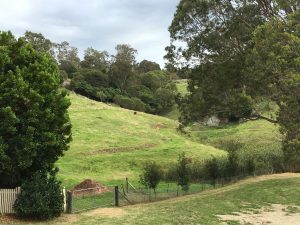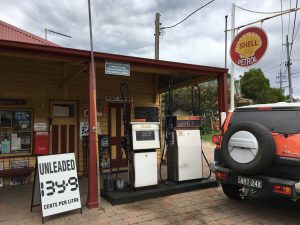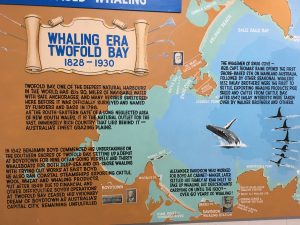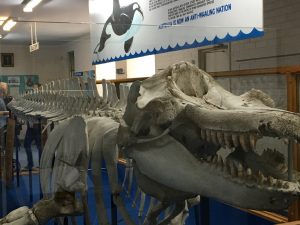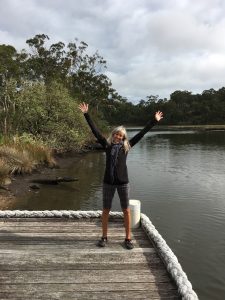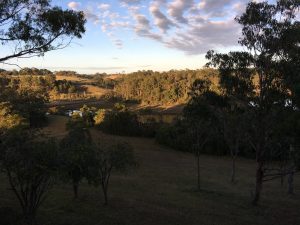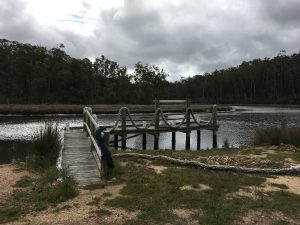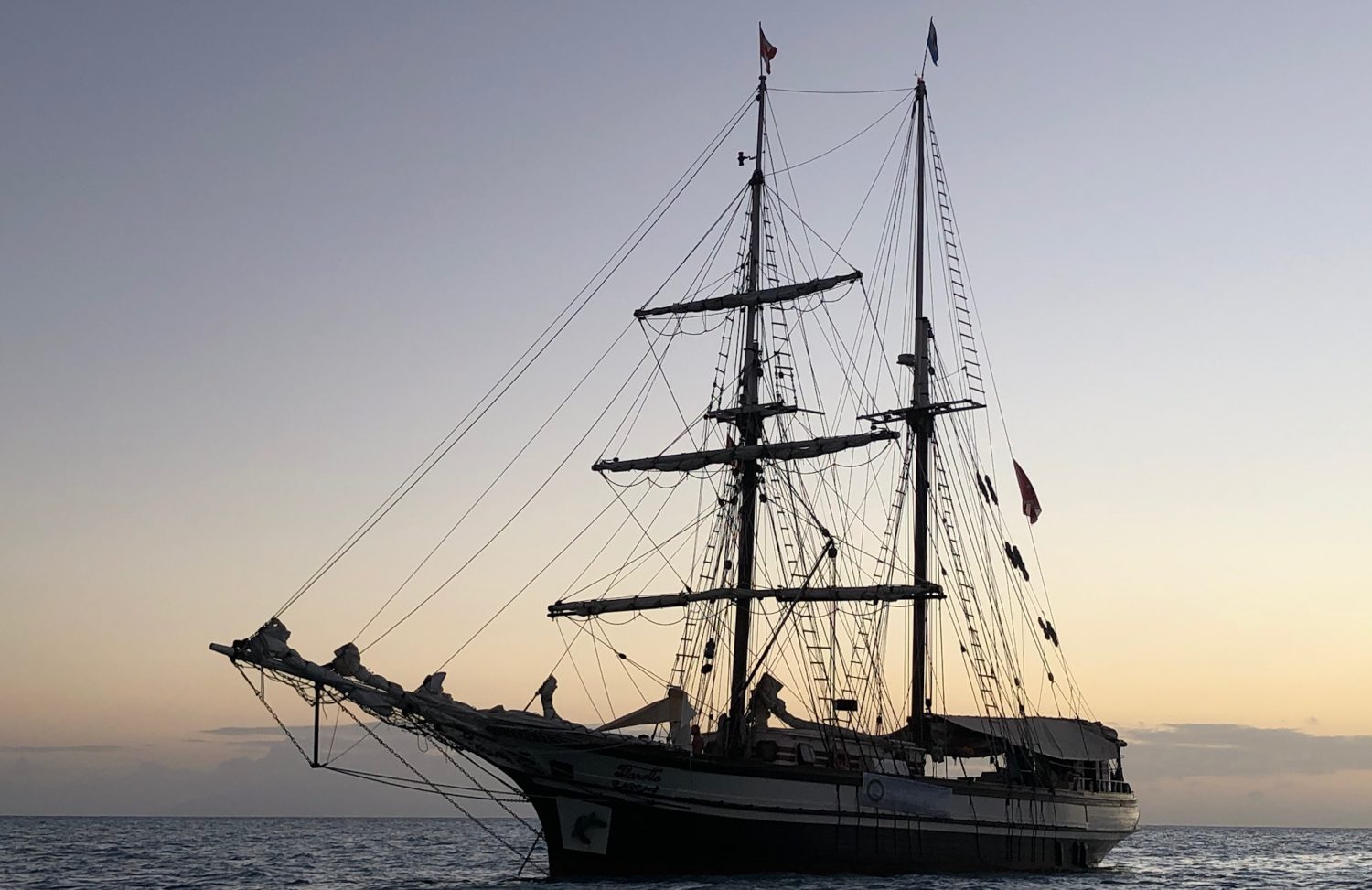No internet for 2 days! Disconnected from news about the latest from D.C. was probably good for me. But unable to read about the lead up to the Oscars — deadly! And of course, no posts.
Morning in Mystery Bay dawned cloudy and chilly again and we set off for a long drive (350 km) to a place in Victoria called Lakes Entrance. Just a few kms on we came to 2 small towns that progress left behind — Central Tilba and Tilba Tilba. The entire village of Central Tilba has been classified by the National Trust as a conservation area. The towns were settled during the Australian gold rushes of the late 19th century, and is now known for some award winning cheese manufactured there. It is nestled at the base of Gulaga/Mount Dromedary, a site of great spiritual significance to the local Yuin people and in May 2006 the NSW Government formally handed back Gulaga National Park ownership and management to the Aboriginal communities on the Far South Coast. The unique architectural style of the villages and farm buildings set on the lush rolling foothills of Gulaga Mountain has given the district its distinctive character. We strolled and bought pastries at the Saturday market and got back on the road.
Next stop was Eden, home of Two-Fold Bay and the Killer Whale Museum. Each year for more than a century on Australia’s far south east coast, autumn moved into winter and the killer whales would return to Eden from the Antarctic and lie in wait. Their prey were the baleen whales journeying to and from their breeding grounds hundreds of kilometers up the coast. Three generations of the Davidson family worked with the killer whales, often invited by the killers and led out to sea to join in the hunts. A few members of the pod of orcas would swim right into the mouth of the Kiah river where the Davidsons had their two isolated houses on the opposite side of the bay from the township of Eden. They would then breach or thrash their tails on the water surface until the whalers emerged and rowed their boats out to meet them. The Davidsons called this behavior “flop-tailing”. No other Eden whalers were ever visited in this manner. On cloudy moonless nights, the Davidson crews would follow the glowing bioluminescent trails of the orcas which would light up the sea. When the baleen whale was dead, the Davidsons would simply row home after tying an anchor and small buoy to it, leaving first spoils to the killers. Just like orcas elsewhere in the world, the Eden killers only ate the tongue and lips and discarded the rest. After a few days the whale would float to the surface and the Eden whalers would row out and tow the remains for “trying out” at their tiny whaling station on the banks of the Kiah river in Twofold bay. The whalers called this arrangement “the law of the tongue” and as a result, far less of the whale was wasted than if the Orcas had hunted alone. The relationship became so close that the whalers would attempt to rescue the killers if they became entangled in ropes and the killers would protect the humans from sharks if the flimsy green whaleboats were smashed. As a result, few fatalities occurred amongst the crews, despite regular serious accidents. The Museum was established in 1931 to record for posterity this relationship between men and orca, and one orca who was well known among the pod that worked with the whalers was Old Tom, whose preserved skeleton resides there. It was an amazing story, and it has been well researched, so appears to be more than folklore.
And on we went, arriving in late afternoon on a riverside ranch with a “granny flat” that was our home for the night. Rhonda had set out a bottle of wine and cheese and crackers, and we watched the crimson rosellas (different from the ones in Will’s yard) as they pecked up the seed left for the chickens! There was an amazing view of the river and it was a peaceful (internet-free) evening.

